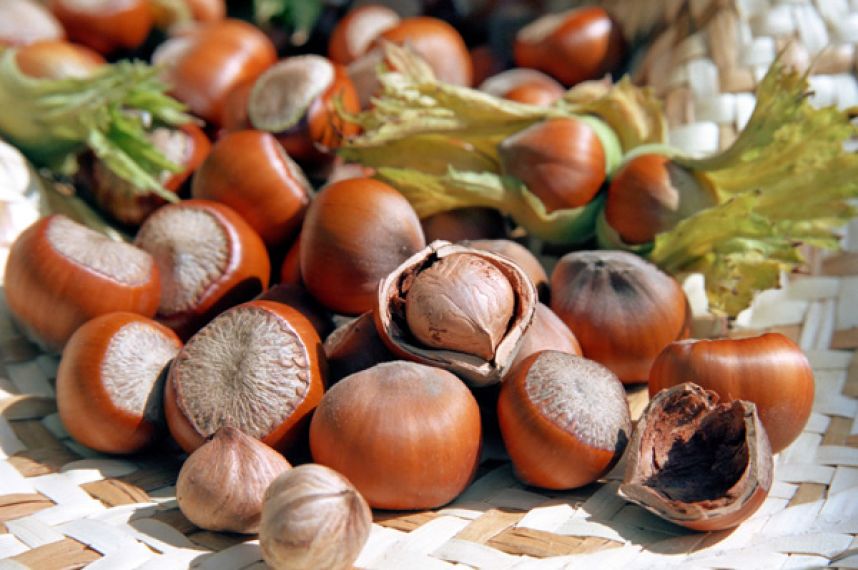It is difficult to find someone who would not like chocolate or candy with hazelnuts. These small nuts not only have a pleasant taste, but also have a beneficial effect on the human body.. The high content of vitamins, chemical elements and amino acids improves health with anemia, chronic fatigue, diabetes, neurosis and heart disease. Hazelnut oil contained in nuts, supplying the body with vitamin E, returns vitality and has a rejuvenating effect. Eating hazelnuts in food is equally useful for children and for older people. Let's take a closer look at this plant, with the peculiarities of care and cultivation of hazel in the home.
Industrial cultivation of hazelnuts in our country is not conducted.Valuable fruits are imported mainly from Turkey, Italy, Spain and China. But hazelnut is not such an exotic plant as it seems. It is the cultural form of common hazelwhich grows in natural conditions in the Caucasus, the Middle East, Ukraine and throughout European territory up to the northern latitudes. So why not grow this unpretentious and useful plant at your dacha, as planting hazelnuts is an excellent business prospect and investment in your health.
Table of contents
Hazelnuts - the cultural form of hazel on the site
Growing hazelnuts for the gardener does not cause much trouble. No wonder the Italians call the "cultural hazel" a plant for the lazy. Hazelnut is a shrub reaching 2-5 m in height depending on the variety, but can be formed by trimming in the form of a tree - the choice depends on the owner of the site.
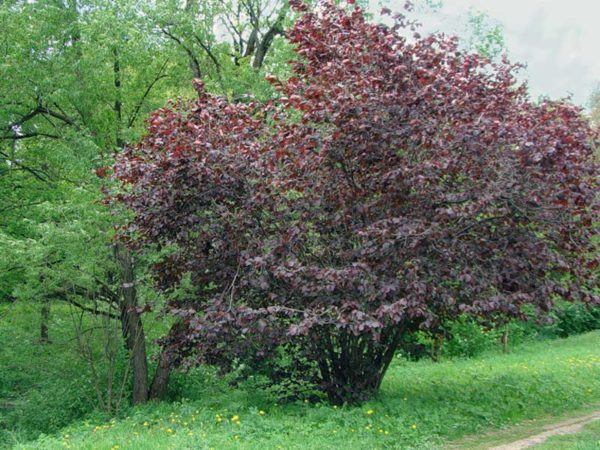
The first harvest can be expected already on 3-4 year after planting sapling. The plant does not need particularly careful care, because in nature, hazel is growing well without human help. After planting, agrotechnics are reduced to watering, removal of basal shoots, annual pruning, and pest control in case of need.
Hazelnuts planted on the site for decades will supply fruits with high nutritional properties and beneficial substances. Mass collection of nuts begins with 5-7 years plant life and continues throughout 10-15 years. After that, the plant is “rejuvenated” - for several years in a row 2-3 old branches are cut off, which are replaced with young ones over time and begin to bear fruit generously.
With each adult hazelnut subject to agronomic techniques get 5-12 kg fruitsable to be stored for a long time (1-3 years) without sacrificing taste. If you plant on the site at least three plants, the annual harvest will look quite weighty.
In addition to the benefits of harvesting, the plant has a high decorative effect. Hazelnut varieties have leaves of different colors and sizes.therefore, gardeners often practice planting in a row diverse leaves with red, yellow and green foliage. Hazelnuts look impressive as a soliter plant formed in the form of a tree. Fans of aesthetics will appreciate the beauty of the shrub that throws out spectacular earrings that attract bees in early spring.
Hazelnut reproduction at home
Fans to grow a tree from a nutlet may well resort to the seed method of reproduction. It is simple and subject to the necessary requirements will allow you to get a strong and healthy plant. However, such hazelnuts will begin to bear fruit much later than the one grown from seedlings. If, when planting a seedling, the first nuts appear on 3-4 year after planting, the plant is grown
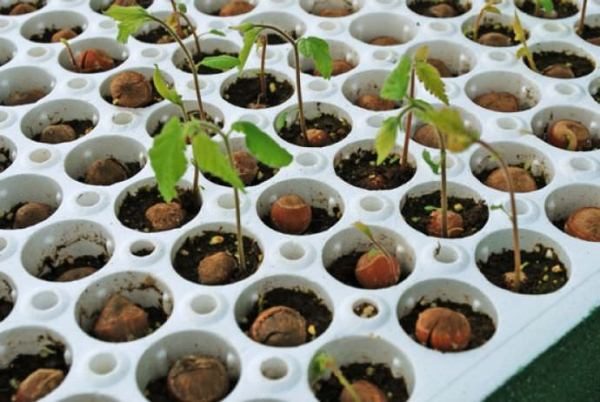
walnut fruit on 6 or even on 10 year.
Therefore, gardeners often use planting seedlings. With this method of reproduction, in contrast to planting a nutlet, all the varietal signs of hazelnuts are preserved, on the basis of which they choose the plant that is suitable for certain conditions.
Selection of seedlings
For planting selected one or biennial seedlings. Preference is recommended to give winter-hardy and drought-resistant varieties. Purchasing a seedling at a local nursery guarantees obtaining zoned varieties adapted to the climatic conditions of the region.
Choosing hazelnut seedlings in the nursery or garden center, you need to carefully examine the root system of the plant. It should be well developed, without damage. Slightly damaged roots are cut to a healthy place.. If there is a lot of damage, the purchase of a sapling should be abandoned, as a strong pruning can affect survival and lead to the death of the plant.
Choosing a landing site
The filbert is considered a plant, unpretentious to structure of soil and a land relief. A moderately fertile soil and a sufficient amount of moisture are favorable for plant development and future abundant fruiting. Gray forest soils, loamy, sandy and black soils of various types are most suitable for cultivation. Optimal groundwater deposition - no closer 1.2-1.5 m to the surface. During the spring thaw, the area should not be flooded with water - prolonged waterlogging leads todecay and death of hazelnuts.
However, do not be upset with those who have a soil composition that is far from ideal. Hazelnuts are safely grown on almost any type of soil characteristic of the middle zone, except for very heavy clay, marshy, saline and dry sandy. When planting a sapling, black soil is facilitated by the introduction of sand and compost humus - this will improve the air and moisture permeability of the soil. The composition of acidic soils is improved by the addition of hydrated lime, ground chalk or wood ash.
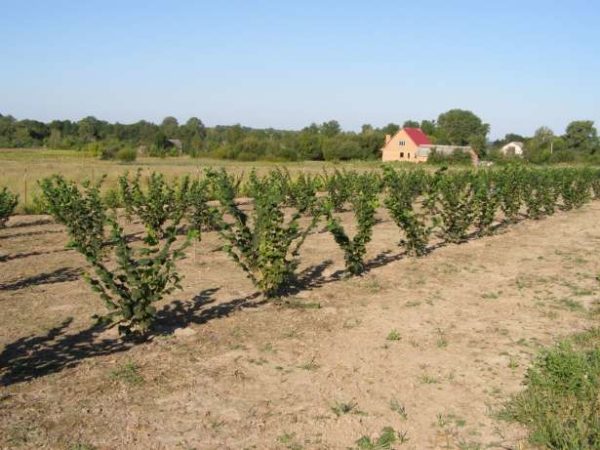
Hazelnut grows equally well on flat areas and mountain slopes. Thanks to the developed fibrous root system, the plant is planted specifically in places where it is necessary to prevent soil erosion. When planting on a plot under hazelnuts, you can take any place that is not suitable for other garden crops.
An important requirement that must be met when choosing a place to land is good illumination. Hazelnuts can grow in shady places, but then you should not hope for a good harvest.. Only the presence of a large amount of natural light contributes to abundant fruiting.
When planting on the slopes for "cultural hazel" you can define a place on any side other than the south. It would seem that the south side is better lit and suitable for plants that love light. In fact, in early spring, in bright sunlight the flower buds bloom early, and then die during the spring frosts.
Culture is sensitive to winds through, therefore in determining the place for landing choose the most protected from drafts areas. As protection against the wind, use the walls of buildings or hedges.
Planting several seedlings, the distance between them and the nearest trees with a volumetric crown can withstand at least 4-5 m, depending on the size of the future plant in adult condition.
Landing technology
According to the information of gardening reference books, seedlings of “cultural hazel” can be planted in early spring (March-April) or in autumn.The hazelnut has a short dormant period, its buds are advanced before other trees, and most of the plants planted in the spring do not take root.
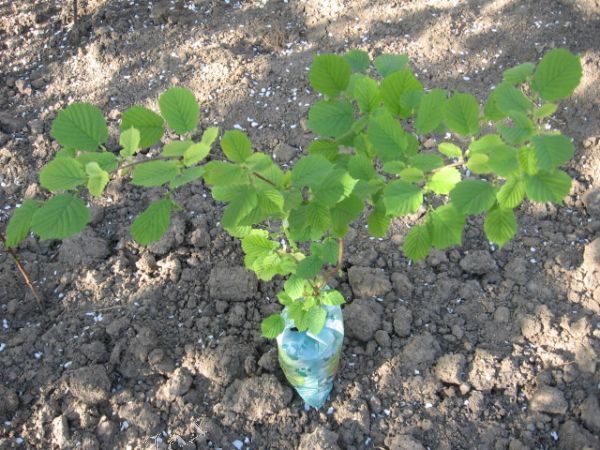
Gardeners with experience are more inclined to fall planting - in October-November. Terms for each area are determined individually depending on weather conditions.. In any case, the autumn planting is carried out a month before the onset of frost.
When planting in the fall, a landing pit for hazelnuts is prepared since springIf planting is planned for spring, then preparation is done in autumn. This technique allows you to rest the land, freed from weeds, and accumulate a sufficient amount of moisture. Often, life makes adjustments to our plans, and if the decision to plant hazelnuts came spontaneously, the landing pit can be prepared at least two weeks before or immediately before planting.
The landing pit is excavated with a size of 0.6 x 0.6 x 0.6 m. Organic and mineral fertilizers are applied to the prepared pit and mixed well with the ground.:
- humus - 2-3 buckets;
- double superphosphate - 150-200 g;
- potassium sulfate - 50-70 g
Compliance with the recommendations on the preparation of the soil will provide the seedling with adequate nutrition for 3-4 years.
It is more convenient to plant hazelnuts with an assistant: one holds the plant and straightens the root system, the other carries out all the necessary manipulations. Planting technology is simple:
- If the roots of the seedling were processed in a clay mash, wash the clay from the roots. Dipping in the talker is only necessary to preserve moisture in the roots until planting.
- If the roots of the plant are slightly dried, pre immerse them in the water 1-2 days. Wrinkled bark of shoots testifies to drying of roots.
- If the roots have dried significantly, then not only them, but the whole seedling is immersed in water for 1-2 days until the bark is smooth.
- Form a landing mound in the center of the pit, stick a peg into it.
- Put the seedling next to the peg, neatly spread the roots of the plant all over the pit. The root neck of the seedling at the time of planting should be just above the soil level. After watering, the ground will settle, and the root neck will be leveled. This is very important - when the root collar is buried in the ground, hazelnuts will develop poorly, and may not produce any fruit at all.
- Fall asleep pit in two rounds. First, half of the hole covered with soil, a little tamped earth and generously watered. Then fall asleep the rest of the pit, tamped again and watered again. The total amount of water for each seedling is at least 25 liters, optimally depending on weather conditions - 30-40 liters.
- Check the level of the root collar - as much as possible allowable elevation above ground level is 1-3 cm.
- The seedling is tied to a peg and cut over 5-6 kidney. The height of the aerial parts should be 20-25 cm. Pruning contributes to the development of several fruitful shoots during the growing season.
Care for a young seedling
A pristvolny circle with a radius of 0.5 m is mulched with peat, humus, manure or sawdust, leaving a free space of 5 cm near the stem. A layer of mulch is usually 7-10 cm.
Hazelnut does not tolerate stagnant water, but at the same time is a moisture-loving plant. Therefore, at first after planting, regular and abundant watering is of great importance for the growth of a seedling. The first time the plant is watered one week after planting, a 7-10-day break is taken and watered again. After that, you can be sure that the planting unit forms a single whole with the rest of the soil and will be able to retain the necessary moisture.
In the first 2-3 winters, hazelnut seedlings are covered with lutrasil or spunbond.. This protects the plant from freezing and breaking open undripe shoots.
Further care and cultivation
From planting to fruiting, depending on the variety, you will have to wait 3-4 years. At first the harvest will be small, but after 1-3 years the collection of nuts will please with its abundance, and in 10 years from each bush it will turn out to collect a bucket of nuts. It is possible to hope for plentiful fruiting if the necessary measures for the care of hazelnuts are carried out.
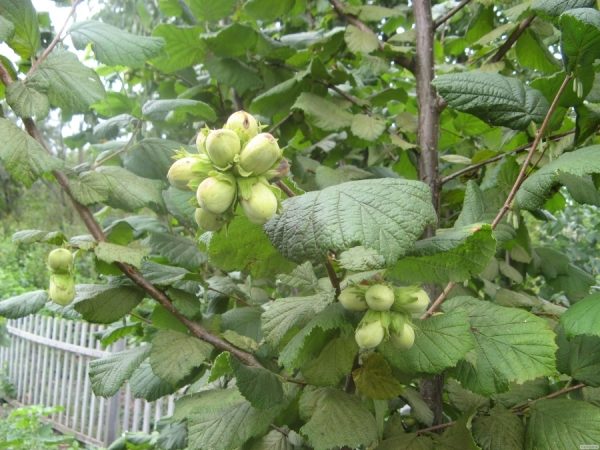
Watering
During the growing season, the plant is watered 1-2 times a month, The total number of irrigations starting from April is 5-6 times. The last time the shrub is watered after leaf fall, it will create in the soil the necessary moisture for the plant next spring. In June and July, the need for moisture increases due to the growth of fruits and the laying of the generative organs of the crop of the next season, so the hazelnuts are watered twice during these months. For watering use on 40-50 liters warm water for every bush.
Weeding and Mulching
Weeding contributes to the destruction of weeds and the saturation of the root system with air.When loosening the soil, it is necessary to take into account that most of the roots come close to the surface. Damaged hazelnut roots are not restored, therefore weeding depth is 8-10 cm. The soil of pristvolny circles is mulched with peat, sawdust, dry grass.
Pruning
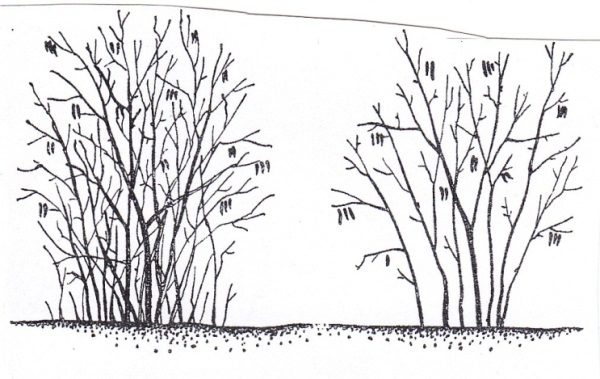
Pruning is necessary for the formation of shrubs. During each summer season, extra shoots are cut out, leaving 8-10 strongest. Trying to remove shoots located inside the bush, as well as weak and damaged.
Hazel Pest Control
For hazelnut pests represent the danger of a nut weevil and hazelnut barbel. Signs of their appearance are "wormy" and premature drying of the fruit. In the fight against insects using systemic insecticides, conducting processing in early May, when the beetles appear en masse, and in mid-June, when the nuts are pushed out. Of the diseases most commonly found are powdery mildew, which can be disposed of by treatment with colloidal sulfur, lime-sulfur decoction or store fungicidal agents, as well as timely harvesting of infected fruits and fallen leaves.
The reader may have the deceptive impression that planting and cultivating hazelnuts is rather troublesome. In this article we have tried to give maximum information useful for the owners of summer cottages and their own estates. Hazelnuts do not need special temperature conditions, can grow on almost any soil and withstand the lack of additional fertilizing. It is enough to make a minimum of effort, and the plant will thank for the generous harvest of tasty and healthy nuts.
